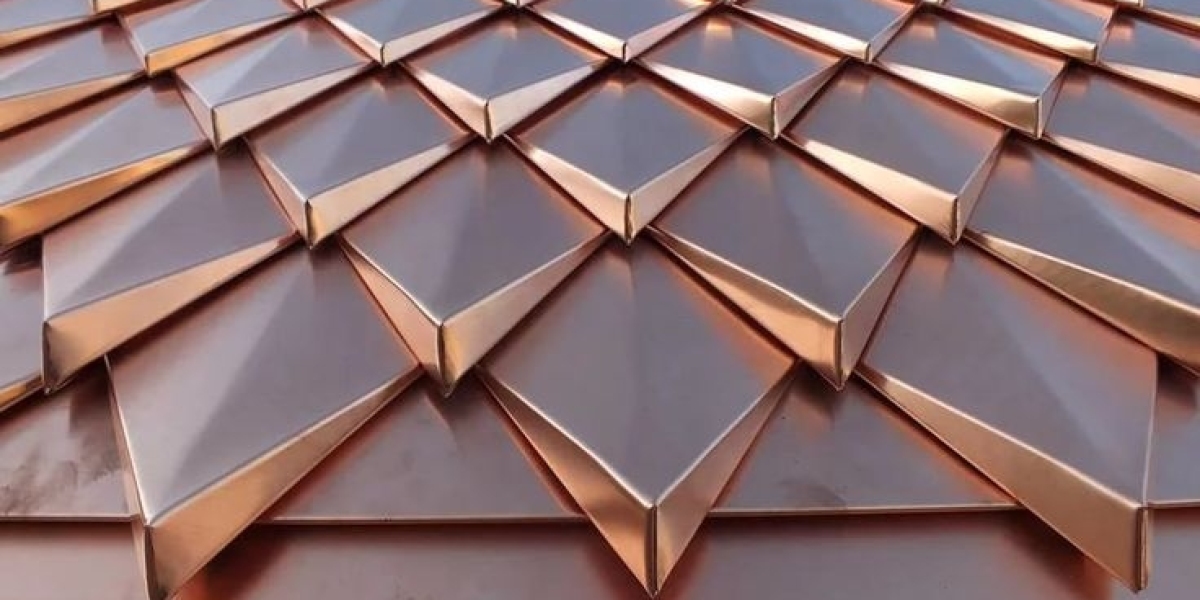Metal roofing has become an increasingly popular choice for homeowners and building owners looking for a durable and attractive roofing material. From withstanding harsh weather elements to adding curb appeal, metal roof offers many benefits over traditional asphalt shingles and wood shake roofing.
Design and Style Options
With Metal Roofing, homeowners have a wide array of design and color options to choose from. Metal roofs come in various styles that can complement both modern and traditionally-styled homes. Some of the most popular metal roofing styles include standing seam, batten seam, tile, and shingle-style designs.
In addition to different styles, there is also an extensive palette of color choices. Standard colors range from earth tones like gray and brown to brighter shades like red, green and blue. Custom colors can also be ordered to perfectly match the trim or siding of the home. This variety in styles and colors allows homeowners to find a metal roof that enhances the architecture and curb appeal of their property.
Durability and Longevity
Perhaps the biggest advantage of metal roofing is its incredible durability and longevity. When properly installed, a metal roof is designed to withstand all types of weather for decades with little to no maintenance. The tough metal surface stands up strong against rain, hail, wind, snow load, UV rays, and temperature fluctuations.
On average, metal roofing can last 50-100 years depending on the material, gauge, and manufacturing process. In comparison, asphalt shingle roofs typically need to be replaced every 15-25 years. This translates to significant long-term savings for homeowners who don't have to repair or replace their roof as frequently. The durable metal surface also provides peace of mind against severe storms and harsh weather.
Low Maintenance
Along with longevity comes extremely low maintenance requirements. Once installed, a metal roof generally does not require any additional treatments or coatings through its lifetime. Heavy-duty paints and finishes form a protective barrier that does not fade, peel, crack or require re-coating like other roofing materials.
Metal roofs are also resistant to mold, mildew and corrosion. This means no power washing, treatments or repairs from environmental factors that can damage other roof types over time. At most, an occasional rinse with a garden hose is all that's needed to remove surface debris buildup. The low-maintenance design provides sizable savings on upkeep costs for homeowners in the long run.
Energy Efficiency
Today's metal roofing products are engineered to provide energy-saving benefits to homeowners as well. Modern metal roof tiles, shingles and panels come with baked-on enamel finishes that reflect sunlight and retain very little heat. As a result, they help to lower roof surface temperatures and reduce attic heat gain compared to darker absorptive asphalt shingles or wood shakes.
This contributes to lower air conditioning costs during summer months. Some metal roof styles like standing-seam also allow for optimal airflow under thepanels which further improves attic ventilation and cooling. In winter, the reflective roof surface helps prevent heat loss through the ceiling. Independent studies have shown metal roofs can reduce cooling expenses up to 25% while lowering heating bills up to 16%.
Safety and Sustainability
Metal roofs are classified as non-combustible roofing materials, which provide an additional fire safety benefit versus wood shakes or asphalt shingles that may catch fire more easily during extreme weather events. Should a wildfire approach a home, the fire-resistant metal surface has less risk of igniting and spreading flames compared to other flammable materials.
From an environmental perspective, metal roofing uses fully recycled materials in its composition and manufacturing. The steel comes from recycled scrap iron while aluminum is often comprised of a high percentage of recycled content. At the end of the roof's long service life, the metal components can then be recycled again rather than ending up in a landfill. Some manufacturers even offer take-back programs to ensure proper recycling of old roofs. This cradle-to-cradle sustainability is appealing to many homeowners looking for eco-friendly building products.
Warranties and Insulation
Reputable metal roofing manufacturers provide strong structural warranties ranging from 30-50 years to protect against cracking, peeling, rusting, corrosion or breaks. Quality installation is also important, so using an experienced professional roofer can preserve any labor warranties which often span 10-20 years. Additional factors like gauge thickness, finishes and manufacturing process further influence material and application warranties on a case-by-case basis.
Top metal roofing brands have also developed advanced systems to add thermal insulation between the panels and roof deck for even greater energy efficiency. These "cool roof" packages incorporate foil-faced blanket batts, rigid foam sheathing or spray-in polyurethane foam to boost a home's R-value rating where needed. Insulated backing turns a basic metal roof into a complete energy-saving roof system.
Get more insights on this topic: Metal Roofing
Jadhao Purvaja
92 Blog posts









